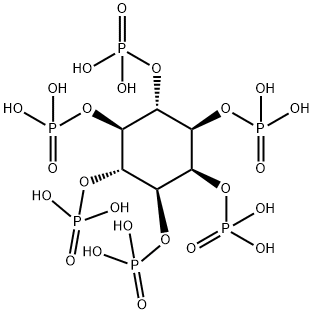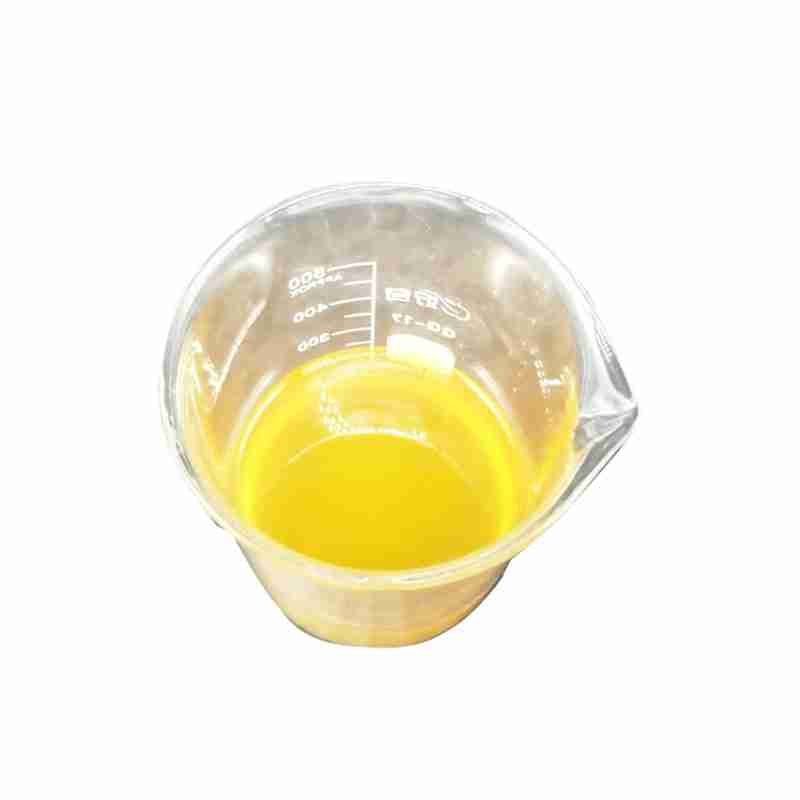Phytic acid CAS# 83-86-3
In plants, natural phytic acid (phyti cacid) hardly exists in free form, but in the form of phytate. This is the brilliance of plants ?C phytic acid uses six phosphate groups in its molecule to store phosphorus. Preserve all kinds of nutrients in it, and release them as nutrients for sprouts after germination and activation in the next year.
Therefore, when it comes to phytic acid in plants, it generally refers not only to free phytic acid itself, but also to phytate. These phytates are compound salts (with several metal ions) or single salts (with one metal ion) formed by combining phytic acid with calcium, magnesium, potassium, sodium, iron and other metal ions. It is mainly in the form of calcium magnesium double salt, that is, calcium magnesium phytate, commonly known as phytin.
发送询盘
Phytic acid CAS# 83-86-3
| Phytic acid Basic information |
| General Information?Preparation and Analysis?Nutrition?Applications?Reference |
| Product Name: | Phytic acid |
| Synonyms: | sauredesphytins;Inositol hexaphosphoric acid, 40-50 wt% aqueous solution;Phytic acid??Inositol hexaphosphoric acid;inocitol hexaphosphate;(2,3,4,5,6-Pentaphosphonooxycyclohexyl) dihydrogen phosphate;Alkalovert;Inositol hexaphosphoric acid, 40-50% aqueous solution;(ca. 50% in Water, ca. 1.1Mol/L) |
| CAS: | 83-86-3 |
| MF: | C6H18O24P6 |
| MW: | 660.04 |
| EINECS: | 201-506-6 |
| Product Categories: | Chelating Agents & Ligands;Intermediates & Fine Chemicals;Pharmaceuticals;Phosphorylating and Phosphitylating Agents;Building Blocks;Chemical Synthesis;Organic Building Blocks;Organic Phosphates/Phosphites;Phosphorus Compounds;Vitamin Ingredients;Organics;Analytical Chemistry;Ligands for Pharmaceutical Research;Radiopharmaceutical Chemistry (Chelating Reagents);Inhibitors;Miscellaneous;Nutritional Supplements;Dextrins??Sugar & Carbohydrates;chemical reagent;pharmaceutical intermediate;phytochemical;reference standards from Chinese medicinal herbs (TCM).;standardized herbal extract;bc0001;83-86-3 |
| Mol File: | 83-86-3.mol |
 |
|
| Phytic acid Chemical Properties |
| Melting point | <25?? |
| Boiling point | 105???C |
| density | 1.432?g/mL?at 25???C |
| vapor pressure | 0.039Pa at 60?? |
| refractive index | n20/D?1.4 |
| storage temp. | 2-8??C |
| solubility | Acetone (Slightly), Methanol (Slightly), Water (Soluble) |
| form | Colourless to Light Brown Solution |
| pka | 1.13??0.10(Predicted) |
| color | Colorless to light yellow |
| Specific Gravity | 1.282 |
| Odor | odorless |
| Water Solubility | MISCIBLE |
| Merck | 14,7387 |
| BRN | 2201952 |
| Stability: | Stable. Incompatible with strong oxidizing agents. |
| InChIKey | IMQLKJBTEOYOSI-GPIVLXJGSA-N |
| CAS DataBase Reference | 83-86-3(CAS DataBase Reference) |
| EPA Substance Registry System | myo-Inositol, hexakis(dihydrogen phosphate) (83-86-3) |
| Safety Information |
| Hazard Codes | Xi,C |
| Risk Statements | 36/37/38-35 |
| Safety Statements | 26-36-37/39-45-36/37/39 |
| RIDADR | 1760 |
| WGK Germany | – |
| RTECS | NM7525000 |
| HazardClass | 8 |
| PackingGroup | III |
| HS Code | 29199000 |
| Toxicity | LD50 intravenous in mouse: 500mg/kg |
- 2
- 2-diallylpent-4-en-1-amine
- 4
- 95-16-9
- Ammonium sulfamate
- Benzothiazole
- cas:67889-00-3ح2
- cas:83524-75-8 | pigment black 32
- cas:928836-00-4 | 2
- cas:932745-70-5 | 4
- Chemical Minerals
- Coconut diethanolamide
- Daily Chemicals
- discount
- for sale
- General pvc resin
- hexyl D-glucoside
- in stock
- Lauramidopropyl betaine
- LAURIC ACID MONOETHANOLAMIDE
- Petroleum Additives
- Plasticiser
- Ploymers
- price
- PVC
- quotation
- Raw Materal
- Remove term: Petroleum Additives Petroleum Additive
- SODIUM ETHYL 2-SULFOLAURATE
Related Products
Silicones are a family of synthetic polymers known for their versatility and stability. They are heat-resistant, non-toxic, and have excellent electrical insulation properties. Commonly used in various industries such as construction, automotive, aerospace, and personal care products, silicones offer a wide range of applications from sealants and adhesives to lubricants and medical devices. Their resistance to extreme temperatures and weathering makes them a preferred choice for many high-performance applications.
Chemical Name: 1,1,2,2-Tetrachloroethane
Other Name: Tetrachlorethane
CAS No.: 79-34-5
Molecular Formula: C2H2Cl4
Molecular Weight: 167.85
Appearance: Liquid
Octyl 4-methoxycinnamate, scientifically known as 2-Ethylhexyl 4-Methoxycinnamate, is a highly effective organic UV filter commonly used in the formulation of sunscreens and cosmetic products. This compound is renowned for its ability to absorb ultraviolet B (UVB) radiation, providing a reliable defense against the sun’s harmful effects on the skin.
Characterized by its chemical formula C19H28O3, Octyl 4-methoxycinnamate is a liquid ester that is readily soluble in organic solvents. It is valued for its photostability, which means it maintains its protective properties even after prolonged exposure to sunlight. This feature makes it an ideal ingredient for products designed to offer long-lasting sun protection.
In addition to its UVB absorption capabilities, Octyl 4-methoxycinnamate is also appreciated for its compatibility with other UV filters, allowing for the creation of broad-spectrum sunscreens. It contributes to the development of formulations that are non-greasy and cosmetically elegant, suitable for a variety of skin types.
As a key component in sun care products, Octyl 4-methoxycinnamate supports the skin’s health by preventing sunburn, reducing the risk of skin cancer, and delaying the signs of photoaging. Its safety profile and efficacy make it a preferred choice in the personal care and dermatological industries for sun protection solutions.
Chemical Name: Potassium Castorate
CAS No.: 8013-05-6
Molecular Formula: C57H107K3O12
Molecular Weight: 1101.74718
Appearance: Yellow Liquid
Chemical Name: UV-120
Other Name: (2’,4’-Di-tert-butylphenyl 3,5-di-tert-butyl-4-hydroxybenzoate)
CAS No.: 4221-80-1
Molecular Fomula: C29H42O3
Molecular weight: 438.66
Assay: ≥99%(LC)
N,N-Dimethylaniline is an organic compound with amine and methyl groups attached to a benzene ring. It is a colorless liquid with a characteristic amine odor. This compound is primarily used as a chemical intermediate in the synthesis of dyes, pigments, and polymers. Its reactivity makes it a valuable building block in the production of various organic compounds, particularly in the pharmaceutical and chemical industries.
Chemical Name: Arabic gum
CAS No.: 9000-01-5
Appearance: powder
Chemical Name: 3-Hydroxybutyric acid
CAS No.: 625-71-8
Molecular Formula: C4H8O3
Molecular Weight: 104.1
Appearance: White powder
1-Octanol, also known as Capryl alcohol or n-Octanol, is a clear, colorless liquid with a characteristic waxy odor. It is an alcohol with eight carbon atoms in its chain, making it a part of the aliphatic alcohol family. This compound is poorly soluble in water but is miscible with ethanol, diethyl ether, and chloroform . It has a melting point of approximately -15??C and a boiling point of around 196??C . 1-Octanol is used in the production of esters, plasticizers, and as a solvent or intermediate in the synthesis of various organic compounds. It also finds application in the fragrance industry as a fixative in perfumes and can be used in the formulation of flavor and scent compositions . It is important to note that 1-Octanol is flammable and should be handled with care, storing it away from sources of ignition and heat .
Ethylhexyl Palmitate is a skin-conditioning ester, derived from ethylhexanol and palmitic acid, that imparts moisturization and a smooth texture to cosmetic and personal care formulations. It is valued for its emollient properties, enhancing the sensory experience of skin care products.
Chemical Name: o-Xylene
Synonyms: 1,2-Dimethylbenzene; ortho-xylene
CAS No.: 95-47-6
Molecular Formula: C8H10
Molecular Weight: 106.17
Chemical Name: STODDARD SOLVENT
CAS No.: 64742-88-7
Appearance: Colorless or Light Yellow Liquid



















